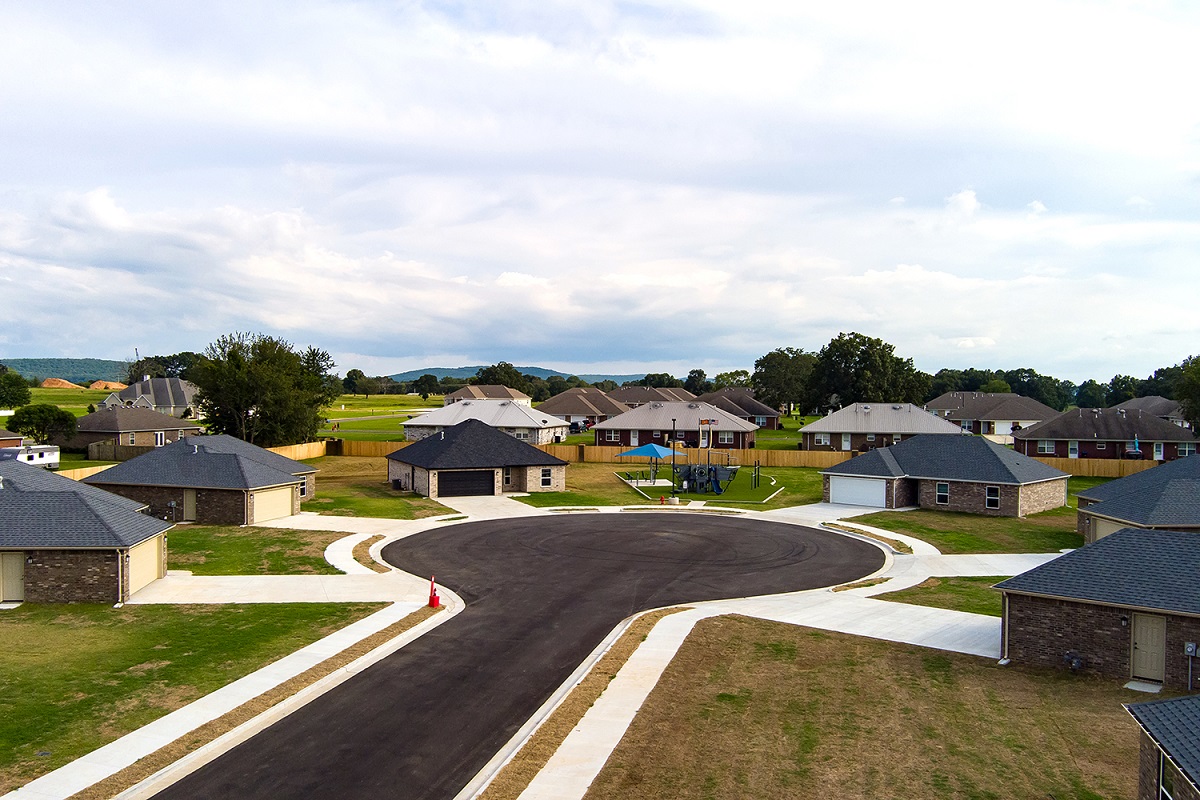TAHLEQUAH, Okla. – The first phase of a comprehensive housing study by the Cherokee Nation predicts a deficit of $1.75 billion in housing for Cherokee citizens in the region over the next decade with a need of more than 8,800 housing units of all types and price points.
Cherokee Nation Executive Director of Housing Programs and Senior Advisor Todd Enlow highlighted the report’s findings Tuesday during Council committee meetings in Tahlequah.
Phase 1 of the housing study is a critical step in advancing Principal Chief Chuck Hoskin Jr. and Deputy Chief Bryan Warner’s historic Housing, Jobs, and Sustainable Communities Act.
“While we know that the housing crisis across this country has burdened Cherokee families, our new housing study is helping us fully identify where gaps exist so we can find solutions moving forward,” Chief Hoskin said. “We have an opportunity to lead on solving this housing crisis. With permanent resources at our disposal thanks to the Council’s recent approval of a permanent Housing, Jobs and Sustainable Communities Act, Cherokee Nation is going to lead the way. We’ve already initiated or finished more than 2,800 housing projects since the initial Housing, Jobs and Sustainable Communities Act was signed into law in 2019, making great strides for Cherokee families. The permanent expansion of this legislation, which I signed into law in September of 2024, puts Cherokee Nation on a path to commit $40 million every three years into perpetuity, mostly from our business profits, with 85% for housing and 15% for community buildings.”
The newly expanded Housing, Jobs and Sustainable Communities Act calls on the Cherokee Nation and Housing Authority of the Cherokee Nation to develop three-year housing plans for each funding cycle, with the ability to adjust the plan as needed.
According to Phase 1 of the tribe’s housing study, Cherokees are more likely to live in substandard housing and in overcrowded homes than the general population residing within the Cherokee Nation’s 14-county reservation. Though housing conditions vary extensively by geography, more rural counties with older housing stock tend to see higher rates of inadequate facilities, the report found.
“This first phase of our housing study reveals a need to develop more than 8,800 units, including more than 5,400 rental units and approximately 3,400 for-sale units, to help address housing cost burdens, reduce overcrowding, and enhance housing conditions for Cherokees in the coming years. One significant indicator of the housing challenge faced by the Cherokee Nation is the waiting list of over 5,000 households for Housing Authority of the Cherokee Nation programs,” said Deputy Chief Warner. “We know these figures emphasize the urgent need for immediate and sustained action to meet the housing demands of the Cherokee people. We’re making that a priority every day, and we now have permanent funding to help us make even more progress.”
Cherokee Council Speaker Mike Shambaugh praised the study.
“We are in the midst of the largest housing expansion and investment in Cherokee history,” said Speaker Shambaugh. “I applaud Chief Hoskin, Deputy Chief Warner and my fellow Council members for not resting on that, but instead being willing to publicly acknowledge that serious housing challenges remain and developing serious plans to address those challenges.”
The Cherokee Nation has celebrated several newly completed housing subdivisions across the reservation in recent months, from Muskogee to Tahlequah and Stilwell, with more still undergoing construction. The Housing Authority of the Cherokee Nation has more than 250 homes under construction in the Cherokee Nation Reservation, including new construction and replacement homes for Cherokee elders, speakers, and families.

